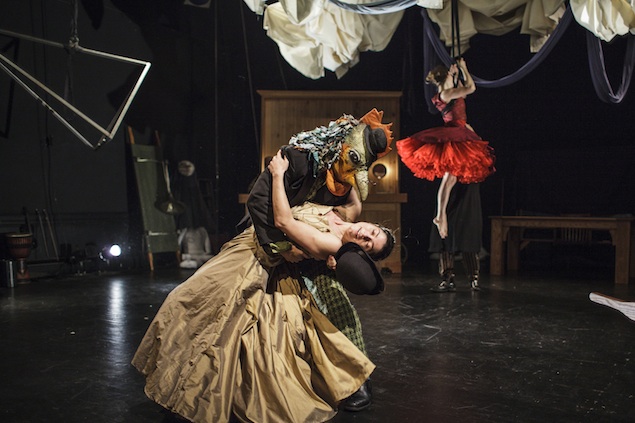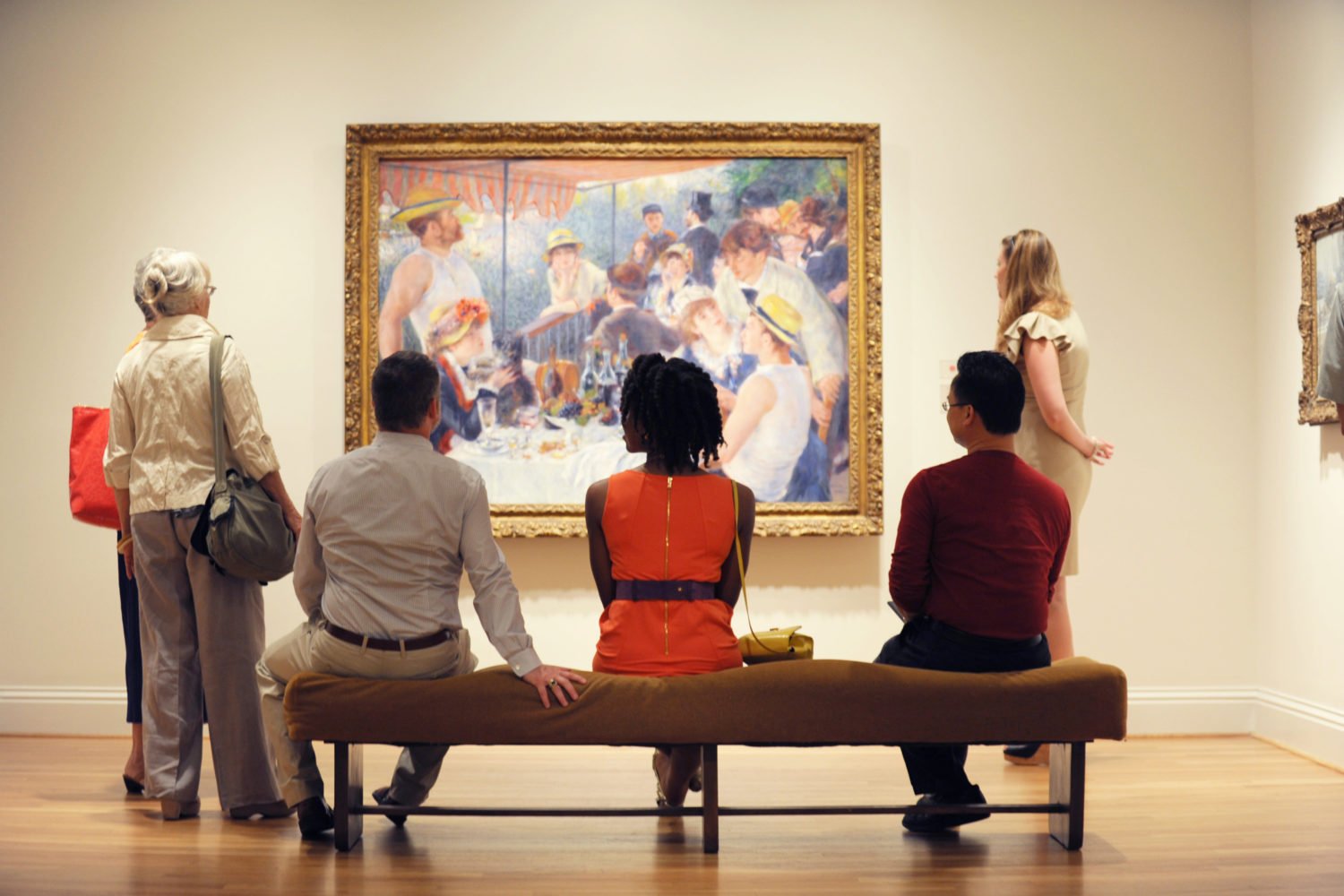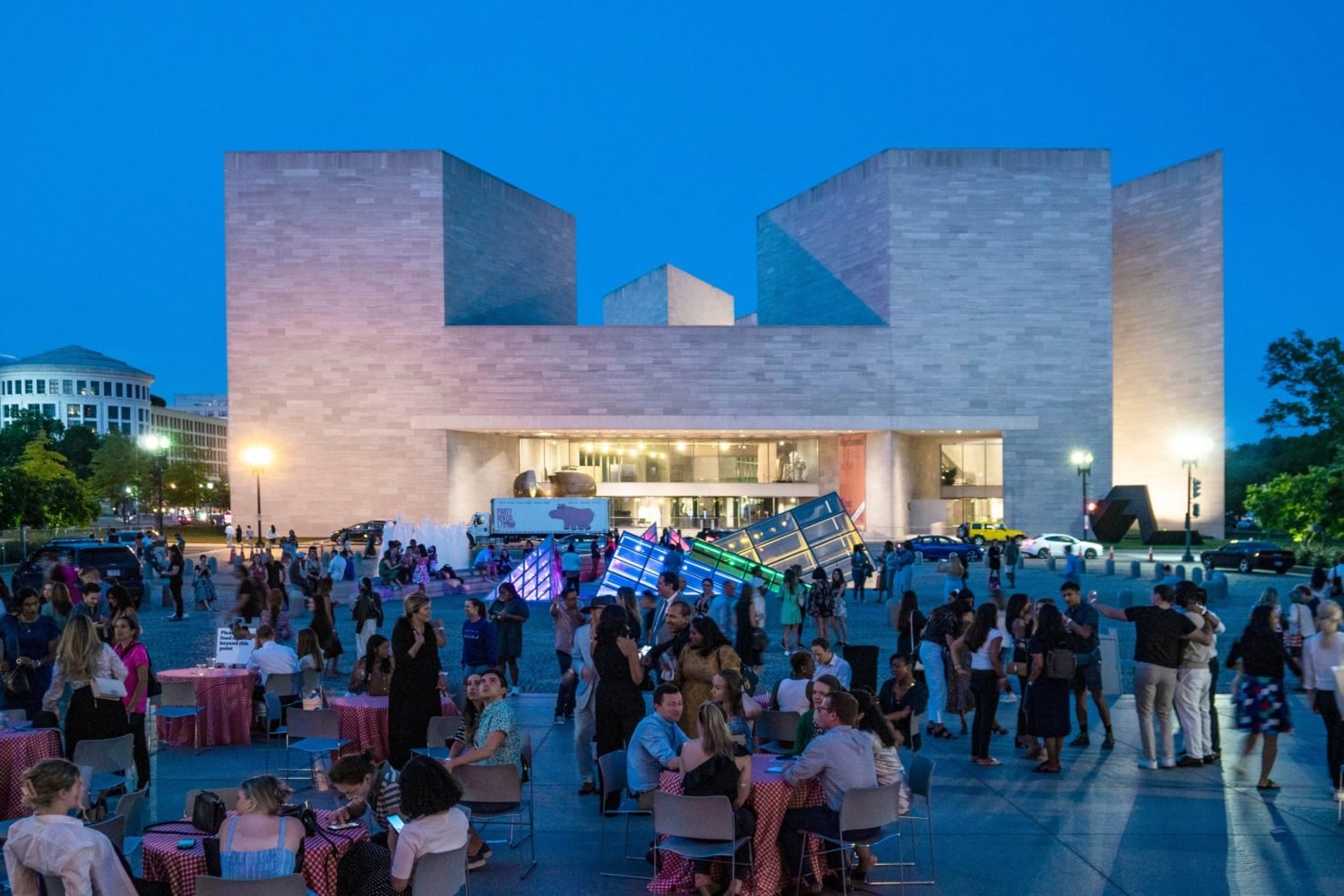
About 13 or so years ago my A-Level Theatre Studies group was tasked with devising
a piece of theater based on the writings on Antonin Artaud, a playwright and opiate
addict of various degrees of lunacy who birthed the concept of “theater of cruelty.”
To shatter the shroud of false perceptions and complacency that afflicted our bourgeois
audience, we pinched them, screamed in their ears, banged drums, and frogmarched them
from one side of the theater to the other while grunting in a “tribal” fashion.
Believing it’s your inviolate right as a performer to inflict discomfort upon someone
who’s given up time and money for the privilege of seeing your work embodies the kind
of arrogance that’s understandable when practiced by 17-year-old girls but irritating
when served up by a 40-year-old professional theater company. Double Edge Theatre,
an avant-garde company based out of a barn in Ashfield, Massachusetts, employs bucketloads
of talent and creativity in
The Grand Parade (Of the 20th Century), its hour-long riff on 100 years of America inspired by the paintings of Marc Chagall
(currently playing for four more sold-out nights at Arena Stage). But the show’s moments
of ingenuity and beauty are outnumbered by scenes featuring a earsplitting cacophony
of loud noises and screechy singing at a stratospheric frequency.
This could be forgivable, even understood as integral to the
The Grand Parade’s mission—only it doesn’t seem to have a clear one. Directed and devised by Double
Edge artistic director
Stacy Klein and her company of international artists, the show is supposedly inspired by Chagall’s
surrealist (sometimes nightmarish) paintings and prints, which incorporate mythology,
biblical stories, and dreamlike motifs. But
The Grand Parade touches on Chagall only fleetingly, instead choosing to re-create the 20th century
through a series of cataclysmic (and clichéd) events.
All is well to begin with: The actors swing from trapezes and stand underneath a billowing
white marquee, some wearing animal heads. They start to chatter in fragments of foreign
languages and sing lone notes at an uncomfortably high pitch. So far, so surreal.
A Chagall print is projected onto the white fabric, and a man wearing a horse mask
rubs the rim of a wine glass to make it vibrate while musicians seated just offstage
contribute to the unsettling barrage of sounds.
But then things launch into a pastiche of a silent movie, complete with policemen,
ladders, a jaunty piano soundtrack, and other hoary tropes. A man with a gun fires
it over and over again. From there the actors flip to scenes depicting World War One,
the Russian Revolution, the Roaring Twenties, the Great Depression, the ’50s, the
Cold War, and the AIDS crisis, also spending a disproportionate amount of time dissecting
the cultural offerings of the 1960s (everything from
Mister Ed to the Beatles).
It’s the depictions of war (and there are several of them) that are the most uncomfortable—a
musician plucks at the strings of a piano while cast members bang drums and the sound
of gunfire rattles overhead. We’ve seen plenty of productions employ this device successfully
in recent years, from the unsettling blackness of
The Great Game to the bagpipes and all-encompassing sound of explosions in
Black Watch.
The Grand Parade doesn’t evoke a sense of war, it just makes a lot of noise. And when juxtaposed with
the faux-cheerfulness of some of the song-and-dance scenes, it bristles.
One also has to ask: What does Chagall have to do with the 20th century other than
the fact he lived in it? So many of his works were fantastical and epic in scale,
exploring Old Testament scenes, cultural allegories, and the nature of art itself,
and Chagall was a frequent creative contributor to theater and ballet. There seem
to be so many ways to explore his work theatrically that using it as a filter to re-create
the era of disco and Jane Fonda feels like a cop-out.
It’s all the more disappointing because there are moments of brilliance, particularly
in the way the cast incorporate props and change their costumes to fit their surroundings.
Visually,
The Grand Parade is enticing, from the odd shapes a cast member makes with her crinoline skirt while
hanging upside down to the way an actor portrays Laika, the first dog shot into space.
A simple cart becomes a motor car and then an airplane through mime, while an archaic-looking
treadmill transforms into all number of different entities. The sound and projection
design by
Brian Fairley, which incorporates multimedia, is frequently breathtaking. When Double Edge Theatre
decides to put its vast pool of talent to work on a show that has more cohesive thinking
behind it, it’ll be a formidable sight to see.
The Grand Parade (Of the 20th Century)
is at Arena Stage through February 10. Running time is one hour, with no intermission.
Tickets are sold out.
















